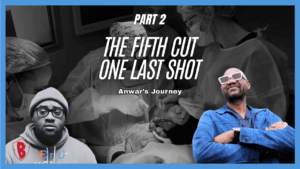When hair loss strikes, hair transplantation is not always an immediate option for many men and women. In these situations, individuals often look to products such as prescription drugs or over-the-counter treatments.
Dr.U’s newest medical journal publication discusses his proprietary plant-based topical formulation, GASHEE, which improved hair health in five patients suffering from a variety of hair loss conditions that ranged from traction alopecia, to androgenic alopecia, menopausal hair thinning, central centrifugal cicatricial alopecia, as well as androgenic alopecia.
The impressive results were well documented in the peer-reviewed medical journal publication “Case Reports in Dermatology”
A Bigger Picture of Hair Loss – GASHEE For Better Hair Quality
The limitations of most products available (i.e. including Minoxidil, Finasteride, and over-the-counter items) is that they address very simple hair loss pathways such as:
- DHT
- low blood circulation to the hair follicles
But in reality, there are many contributing factors to hair loss that are often unacknowledged by product manufacturers. These include:
- inflammation – usually the central even which leads to cellular death (apoptosis), oxidative stress, and abnormal signal transduction
- oxidative stress – tissue damage caused by scavenging free radical molecules which accelerates the aging processes of the hair follicle
- misc detrimental factors – the hair cycle and the dermal papilla cells of the follicles may be adversely affected by the production of compounds like IL-6 and TGF-B
- Hair breakage from dryness and loss of cuticle coating
- Poor nutritional support deprives the hair follicles of generating strong lively hair shafts that will not wither and break off to cause thinning
The hair cycle itself includes hair production (anagen phase), a transition phase (catagen phase) where hair production slows, and a final resting non-growth phase (telogen). These changes are signaled by regulatory (activator and inhibitor) proteins such as cytokines, growth promoters, and growth inhibitors. TGF-B induces entry into the catagen (i.e. slowing) phase. IL-6 suppresses derma-papilla cell division and proliferation. These particular cells are located at the base of the follicle and are responsible for hair production.
As you can see, hair loss isn’t as simple as high DHT levels or a low blood oxygen supply. When products only focus on a partial view of hair loss, their efficacy may be compromised across individuals.
In designing GASHEE Dr. U understood that hair loss is a “cascade” of events within a much larger and more complex physiological picture. It takes into account a more comprehensive outlook that includes DHT, blood circulation, inflammation, oxidative stress, hair shaft integrity, and other components that act upon the regulatory proteins of the hair cycle.

Why Plants May Be Better and Safer Hair Health Promoters
The complex, interrelated nature of hair loss conditions requires multiple treatment targets, not just single-variable pathways. Unfortunately, however, synthetic drugs, which are based on one-active ingredient molecule, are designed to focus on just one causal factor.
And sometimes, the effects of these active constituents may be extreme, depending on dosage or the unique responses of individuals. Without some type of counterbalancing force, the risk of side-effects in other parts of the body becomes a dangerous reality.
So when it comes to resolving a constellation of problematic issues, what type of approach would be both safe and effective?
A growing number of physicians now believe that the answer lies in whole plant extracts. Natural plant matter contains variations of different compounds. Some of the variants act as active treatment agent. Others function, more so, as neutralizers, helping to balance out excess or toxic effects when needed.
This natural holistic design is more seamlessly compatible with the detailed needs of our bodies. Our digestive tract, for example, activates specific receptors to express and then take in exactly what it needs to restore a healthy and balanced state of equilibrium. In short, one molecular type is not enough!
Again, the main benefit offered by plants is that they contain a spectrum array of different compound variations. This schema is more suitable for addressing the intricate and nuanced needs of our bodies.
Hair Improvements on 5 Real-Life Patients
Using plants to target a more complete and multifaceted hair loss paradigm is indeed feasible for real-life individuals. According to the peer-reviewed publication, GASHEE was used topically by five men and women who were experiencing different types of hair loss conditions including:
- female AGA (androgenic alopecia)
- traction alopecia (TA)
- central centrifual alopecia (CCCA)
- post-menopausal thinning
All five patients experienced significant improvements in their hair growth after using GASHEE for 3-15 months. There were no documented side effects. And all of them gave the product high satisfaction ratings.
At the Dr.U Hair and Skin Clinic, we are very proud to have our work in natural product development published by Case Studies in Dermatological Medicine, open access, peer-reviewed journal devoted to new information on treating, diagnosing, and preventing hair, skin, and nail disorders.
Our conscious GASHEE consumer brand represents a comprehensive hair wellness line consisting of our topical and oral supplement formulations. We are continuously working on building our roster list of real-life success cases (i.e. GASHEE True Life Stories). If you are interested in learning more about our exciting in-house product development, please visit the main site of Dr.UGro GASHEE here.
Be sure to comment below to tell us more about your experience with GASHEE.
Frequently Asked Questions – GASHEE For Hair Wellness
Since Gashee is made of natural, bioactive plant extracts, will it spoil or go rancid?
Gashee uses sustainable, natural-derived preservatives which Dr.U identified for shelf life longevity after thoroughly researching different options. Prior to this, the use of botanicals required the use of artificial chemical preservatives.
What plant extracts were used to create the GASHEE topical product used on the five subjects in Dr.U’s publication?
The effectiveness of Dr.U’s formulation is attributed to a combination of phytoactive ingredients. His publication, however, highlights four major botanical extracts. These include:
Green tea (EGCG): a DHT inhibitor that preserves levels of IGF, a compound that promotes the anagen growth phase and prevents the catagen slowing phase caused by cellular (derma papilla) apoptosis in the hair bulb.
Eclipta Alba: a down regulator of TGF-B, a compound that induces the anagen phase.
Fenugreek: an anti-inflammatory that counters compounds that are detrimental to the hair follicle, such as IL-6 and TNF-a
Gotu Kola: a natural promotor of angiogenesis (i.e growth of blood vessels)
References
- Umar S. and Carter M. A Multimodal Hair-Loss Treatment Strategy Using a New Topical Phytoactive Formulation, Case Reports in Dermatological Medicine / 2021
Further Reading
Learn more about using shea butter for your hair as a natural sun protectant, moisturizer, and more.




